The post Unlocking SEO Success: How JinMatic Boosts Client Traffic with Low-Hanging Fruit Keywords appeared first on JinMatic.
]]>This approach helps our clients gain significant traction without the need to chase highly competitive keywords right away.
Here’s how we’ve applied this method to improve organic traffic for several of our clients:
HN Clinic – Medical Aesthetic Clinic
Client Goal: Increase patient inquiries and traffic to their website for various aesthetic treatments.
We began by identifying keywords that HN Clinic was already ranking for but hadn’t yet broken into the top 10 positions. By refining content related to these keywords, such as landing pages on Botox treatments and non-surgical procedures, we managed to improve rankings from positions in the 20-40 range to the top 10.
Our strategy involved:
- Local SEO enhancements: We included keywords with location-based terms, like “Malaysia,” to better target local searchers.
- Content refresh: We optimized existing blog posts and service pages, tweaking them with better headers, image alt text, and internal links to boost relevance.
- User experience improvements: We ensured the site loaded quickly and was mobile-friendly, which played a key role in improving rankings.
Results: Within three months, HN Clinic’s organic traffic increased by 40%, and inquiries for popular treatments like Botox and dermal fillers surged by 30%.
Flexi Surface – Rubber Flooring Company
Client Goal: Boost online visibility and generate leads for rubber flooring products.
Flexi Surface was ranking on the second and third pages for several crucial keywords related to rubber flooring. We identified the opportunity to move these terms into the top 10 by:
- Creating targeted landing pages: We developed dedicated landing pages for these specific products and services, each focusing on a unique keyword. For example, rubber flooring for the gym, and rubber flooring for the playground.
- Industry-specific content: We wrote new blog posts that offered insights on the benefits and uses of different rubber flooring types, adding long-tail keywords that complemented the primary ones.
iMEC – Cleaning Equipment Supplier
Client Goal: Increase online sales and organic traffic for commercial cleaning equipment.
iMEC was already ranking for several product-related keywords, but they were sitting in positions #25-45. We decided to target these terms as low-hanging fruit and optimized iMEC’s product pages by:
- Enhancing product descriptions: We revamped the content for each product, incorporating the low-hanging fruit keywords naturally into product titles, descriptions, and meta tags.
- Adding customer reviews: Including product reviews helped create dynamic, keyword-rich content that improved rankings and trust.
- Internal linking: We built internal links from related blog posts and other high-traffic pages on the site to these key product pages.
Results: Organic traffic increased by 35%, and online sales of products like high-pressure cleaners and carpet cleaners rose by 20% within three months.
Vinylvox – Vinyl Record Store
Client Goal: Improve visibility in the niche market of vinyl record enthusiasts and drive online and in-store sales.
Vinylvox was already ranked for a range of vinyl-related search terms but sat on the second or third page. We helped them break through to the top by:
- E-commerce SEO: Optimized their product listings for vinyl records, using both short and long-tail keywords, and improved the structure of their category pages.
- Blog strategy: We published articles about caring for vinyl records, top-selling albums, and rare finds, all optimized for the keywords we were targeting.
Results: Vinylvox’s website traffic increased by 50%, and they saw a noticeable rise in both online sales and in-store foot traffic.
Why Low-Hanging Fruit Keywords?
By focusing on low-hanging fruit keywords, we’re able to:
- Achieve quick wins: These keywords are easier to rank for and can move to the top 10 positions with just a few strategic improvements.
- Maximize ROI: Instead of chasing highly competitive terms, which can take months or years to rank, we focus on keywords that deliver faster results with less effort.
- Build a solid foundation: Once a client starts ranking for these terms, it’s easier to leverage that authority to target more competitive keywords in the future.
At JinMatic, our goal is to deliver measurable and sustainable growth for our clients, and focusing on low-hanging fruit keywords is one of the key strategies we use to get them there.
The post Unlocking SEO Success: How JinMatic Boosts Client Traffic with Low-Hanging Fruit Keywords appeared first on JinMatic.
]]>The post Local and Cultural Integration: Enhancing Business Reputation and Revenue appeared first on JinMatic.
]]>
Local and cultural integration is a powerful strategy for businesses to strengthen their market presence, enhance their reputation, and boost revenue.
By embedding local culture into their operations, businesses can create authentic connections with their target audience, foster customer loyalty, and differentiate themselves in a competitive marketplace.
This approach is particularly effective in regions with rich cultural heritage, such as Malaysia.
JinMatic team would like to explore how three distinct businesses – xam max kitchen, Mangala Estate Boutique Resort, and our own business, JinMatic – can leverage local and cultural integration to improve their reputation and drive revenue.
xam max kitchen: Home Appliances Store
Product Sourcing and Offerings
- Local Products: By sourcing and offering home appliances from local manufacturers, xam max kitchen can appeal to customers who prioritize supporting local businesses. This not only boosts the local economy but also builds a reputation for the store as a community supporter.
- Cultural Relevance: Stocking products that cater to the specific needs and preferences of the Malaysian market. For example, xam max kitchen offers high-suction cooker hoods specifically designed to cater to the unique needs of Asian cooking. Recognizing the intensity and aromatic nature of Asian culinary techniques, these cooker hoods are engineered to effectively handle high levels of smoke, steam, and strong odours that are often produced. By offering high-suction and easy-cleaning cooker hoods like Fujioh, xam max kitchen meets the demands of Asian cooking.
Marketing and Branding
- Local Stories: Highlighting the stories of local suppliers and the cultural significance of products in marketing campaigns can create an emotional connection with customers.
- Language and Communication: Using local languages and culturally relevant messaging in Breville product promotions can resonate more deeply with the target audience.
Mangala Estate Boutique Resort: Boutique Resort in Pahang
Guest Experience and Services
- Urut Melayu: As an award-winning resort in Malaysia, Mangala Estate Boutique Resort offers Urut Melayu, a traditional Malay massage that embodies the essence of relaxation and holistic well-being. Urut Melayu focuses on relaxing both the body and mind by improving blood circulation through long kneading strokes and gentle stretching techniques. Special attention is given to manipulating palm pressure and thumb points to promote health, vitality, and an overall sense of well-being. The experience is enhanced with the resort’s signature warm blended oils, prepared with local herbs and spices, providing an authentic and immersive cultural experience for guests. This service not only highlights traditional Malay healing practices but also reinforces the resort’s commitment to cultural preservation and guest satisfaction.

- Cultural Decor and Architecture: Designing rooms and common areas with elements of local architecture and decor can provide guests with a unique and authentic stay.
Sustainability and Community Involvement
- Local Partnerships: Partnering with local artisans, farmers, and businesses to supply goods and services can support the local economy and promote sustainable tourism.
- Cultural Preservation: Engaging in activities that preserve and promote local culture and traditions can attract culturally conscious travellers and enhance the resort’s reputation.
Marketing and Branding
- Cultural Narratives: Using storytelling to share the history and culture of the area can create a compelling brand narrative that attracts guests seeking authentic experiences.
- Local Festivals and Events: Promoting and participating in local festivals and events can boost the resort’s visibility and reputation within the community.
Entertainment Industry
The entertainment industry, encompassing film, music, television, lottery, theatre, and more, has a unique opportunity to harness local and cultural integration to enhance its reputation and drive revenue.
By celebrating and incorporating local culture into content, production, and marketing strategies, entertainment companies can create more authentic and relatable experiences for audiences.
For example, the leading 4D result platform, 4D Panda, has created a “4D Dictionary” feature. The goal is to allow the users to search the 4-digit number behind each keyword/their dream. Similarly, the 4D betting platform 4D13 created a 4D prediction tool to allow visitors to get their lucky numbers. This approach strengthens connections with local communities and appeals to global audiences seeking diverse and culturally rich entertainment options.
HN Clinic: Aesthetic Clinic
HN Clinic understands the importance of aligning its services with Malaysia’s cultural expectations and beauty standards. The aesthetic clinic offers treatments that cater to a diverse clientele, respecting the unique beauty ideals of different ethnic groups within the country. Whether it’s subtle enhancements or more noticeable changes, the clinic ensures that its offerings are in tune with the cultural sensitivities and preferences of its patients.
Flexi Surface: Rubber Flooring Specialist
Sustainability is an essential consideration in Malaysia, and Flexi Surface has integrated eco-friendly practices into its manufacturing processes. Their rubber flooring, often made from recycled materials, is marketed as a solution that contributes to both local environmental preservation and global sustainability efforts. This commitment resonates with businesses, government bodies, and environmentally conscious consumers, further strengthening the brand’s reputation.
Flexi Surface actively engages with local contractors, architects, and builders to understand project-specific requirements. These partnerships strengthen their reputation within the business ecosystem, fostering a sense of shared growth. By working with Malaysian-based suppliers, the company also supports local industries, enhancing its image as a community-driven enterprise.
JinMatic: SEO Agency
Tailored SEO Strategies
- Local SEO: Developing SEO strategies that focus on local search terms and culturally relevant keywords can help local businesses rank higher in search results, attracting more local customers. For example, instead of focusing only on English keywords like water purifiers, Terence Lim noticed the rising trend of Malay and Chinese keywords. For the 3M SEO campaign, our team focuses on keywords like “penapis air”, “净水器” to cater to the different target audiences.
- Cultural Sensitivity: Understanding and incorporating cultural nuances into SEO content can improve engagement and conversion rates.
Client Relationships
- Local Expertise: Demonstrating expertise in the local market and cultural context can build trust and credibility with clients, positioning JinMatic as the go-to agency for businesses seeking to enhance their local online presence.
- Community Engagement: Participating in local business networks and community events can strengthen relationships with potential clients and partners.
Content and Marketing
- Culturally Relevant Content: Creating content that reflects local culture and interests can improve the effectiveness of digital marketing campaigns.
- Local Case Studies: Showcasing successful projects with local clients can demonstrate the agency’s ability to deliver culturally tailored solutions.
Challenges Businesses May Face in Local and Cultural Integration
While integrating local and cultural elements into business operations can offer significant advantages, it also presents several challenges. These challenges can stem from various factors including cultural sensitivities, logistical issues, and market dynamics.
JinMatic team has analyzed some of the key challenges businesses might face when attempting to leverage local and cultural integration as below.
1. Cultural Sensitivity and Misrepresentation
Understanding Cultural Nuances: Accurately understanding and representing local cultures can be difficult, particularly for businesses that are not deeply familiar with the cultural context. Misrepresentation or superficial treatment of cultural elements can lead to backlash and damage the company’s reputation.
Avoiding Stereotypes: There is a risk of perpetuating stereotypes or cultural clichés, which can offend the local community and diminish the authenticity of the business’s efforts.
2. Logistical and Operational Challenges
Resource Allocation: Integrating local culture often requires additional resources, such as hiring cultural consultants, sourcing local materials, or investing in training programs. This can be costly and time-consuming.
Supply Chain Issues: Sourcing products and services locally can sometimes lead to supply chain disruptions, especially if local providers cannot meet the required standards or volume.
3. Regulatory and Compliance Issues
Local Regulations: Businesses need to navigate local regulations and standards, which can vary significantly from one region to another. Compliance with these regulations can be complex and may require legal expertise.
Intellectual Property: Protecting intellectual property related to cultural elements can be challenging, particularly in regions with different legal frameworks and enforcement practices.
4. Market Acceptance and Adaptation
Consumer Preferences: Local consumers might have strong preferences or loyalties to established local brands, making it difficult for new entrants to gain a foothold.
Balancing Local and Global Appeal: Businesses aiming for a global market might struggle to find the right balance between local cultural integration and maintaining a universal appeal.
5. Communication and Marketing Challenges
Language Barriers: Effective communication in the local language is essential but can be challenging for businesses without linguistic expertise. Miscommunications can lead to misunderstandings or negative perceptions.
Cultural Relevance in Marketing: Creating marketing campaigns that resonate culturally with local audiences requires deep insights and creativity, which can be difficult to achieve without local expertise.
6. Community Engagement and Trust
Building Trust: Establishing trust with local communities takes time and consistent effort. Businesses need to demonstrate genuine commitment to cultural integration, rather than appearing to exploit local culture for commercial gain.
Managing Expectations: Engaging with local communities can raise expectations for ongoing support and involvement. Businesses need to manage these expectations carefully to avoid disappointment and negative reactions.
7. Internal Organizational Challenges
Cultural Competency Training: Ensuring that employees understand and respect local cultures requires comprehensive training programs, which can be resource-intensive.
Resistance to Change: Employees and management might resist changes associated with cultural integration, particularly if it involves altering long-standing practices or adopting new ways of working.
Case Studies of Challenges
- Starbucks in China: Starbucks faced challenges when entering the Chinese market, including cultural differences in coffee consumption habits and strong competition from local tea houses. The company had to adapt its offerings and marketing strategies to fit local tastes.
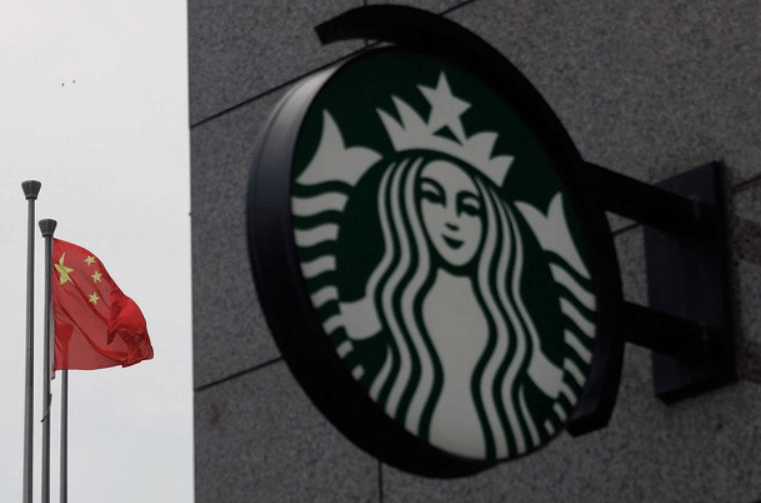
- Walmart in Germany: Walmart struggled with cultural integration in Germany due to differences in retail practices, labor regulations, and consumer behavior. The company eventually exited the market after failing to adapt to local preferences and practices.
Integrating local and cultural elements into business operations can yield significant benefits but also comes with a range of challenges. Businesses need to approach cultural integration thoughtfully, with a deep understanding of local contexts and a genuine commitment to cultural respect and authenticity. By addressing these challenges proactively and strategically, businesses can enhance their reputation, build stronger relationships with local communities, and ultimately drive revenue growth.
Conclusion
Integrating local culture into business operations, marketing, and customer experiences can significantly enhance a company’s reputation and revenue.
For xam max kitchen, Mangala Estate Boutique Resort, and JinMatic, leveraging cultural elements and local connections not only differentiates them from competitors but also fosters deeper relationships with customers and the community.
This approach can lead to increased customer loyalty, positive word-of-mouth, and ultimately, higher revenue. By valuing and promoting local culture, these businesses can thrive in their respective markets and contribute to the broader cultural and economic landscape.
The post Local and Cultural Integration: Enhancing Business Reputation and Revenue appeared first on JinMatic.
]]>The post How to Measure SEO Performance with Meaningful KPIs appeared first on JinMatic.
]]>
In SEO, measurement is important to success.
Keyword rankings are one of the most common Key Performance Indicators (KPI) used among SEO agencies in Malaysia.
But to look at the full picture of your SEO campaign, you should also measure other meaningful KPIs.
What are Meaningful SEO KPIs?
Simply put, meaningful SEO KPIs have an obvious impact on your SEO campaign.
They provide actionable insights in making business decisions.
In this post, I’m going to talk about 3 SEO KPIs that we usually use to measure our clients’ SEO results.
Let’s dive in.
1) Organic Search Growth
Organic search growth is the increase or decrease of organic traffic over a specific time range.
It shows if your SEO campaign is improving over time.
Google Search Console (which is free) come in handy when tracking organic search growth.

To see your organic search growth, head over to your Google Search Console account > Performance.
Depending on the competition level, the date range we select can be 3-12 months. In this example, we selected 3 months.
The blue colour line is total clicks, showing the visits generated from Google search results.
The purple line is total impressions, showing how many times a user saw a link to your site in Google search results.
Ideally, you want to see both lines going up consistently.
If you see them stagnant or decrease, don’t panic yet.
Some industries are seasonal so it is common to see a decrease in demand after the season is over. For example, the durian industry.
If your industry is not seasonal, you should look into the root cause of the decline.
Ask yourself: Did you make any major changes to your website recently? Sometimes an SEO Audit would help you find out the root cause.
Another way to analyze your organic search growth is by comparing a time range with the previous one:
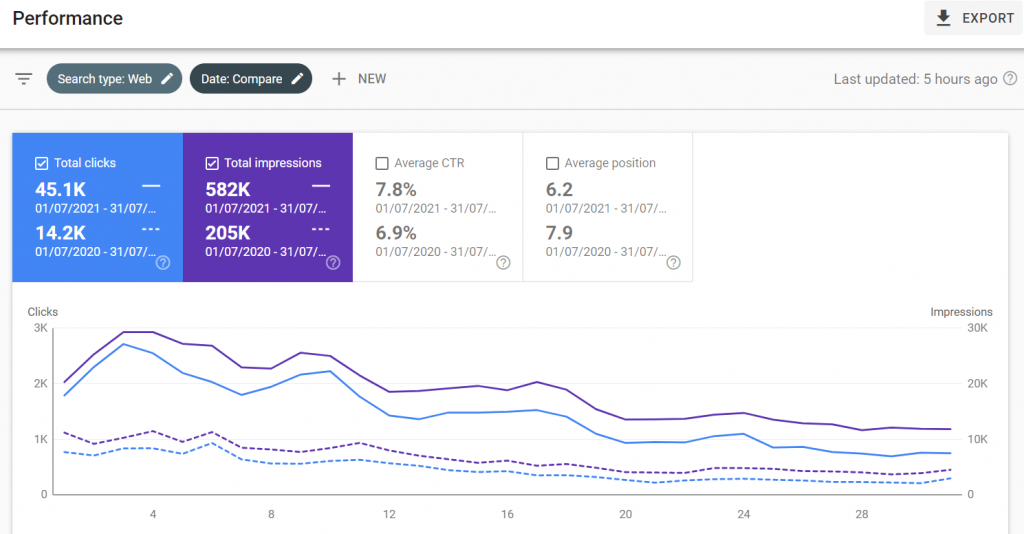
Let’s take the durian as an example again (sorry durian haters!).
You can compare your SEO performance between the same period of this year and last year, eg July 2021 VS July 2020.
This approach is great for seasonal products since you’re comparing month-to-month.
2) Revenue Attributed to Organic Traffic
Revenue is the main reason most businesses want to do SEO.
Thanks to analytical tools like Google Analytics, you can set up goals and track the revenue credited to organic traffic.
You can compare the revenue with other traffic sources. For example, social media might bring you more traffic than organic search but its revenue is much lesser due to the buying intention.
To use this, you’ll need to set up goals in your Google Analytics. If you’re running an online store, you’ll need to enable Ecommerce tracking.
3) Assisted Conversion
The assist in football is the player who passes the ball to the final teammate who then scores.
In SEO, we also have the assist. Although these sources didn’t directly lead to conversion, they play a role to assist the conversion.
Assisted conversion is one of the ways to measure the quality of your traffic source.
To measure the assisted conversion, you can use Google Analytics.

In your Google Analytics account, go to Conversions > Multi-Channel Funnels > Assisted Conversions. What I will do is set the date range to “Last month” and comparing it with the “Previous period”.
Now you can evaluate the improvement or decline of the organic traffic quality.
Keyword Rankings: Do They Still Matter?
Keyword rankings are the most common SEO KPI used by SEO agencies.
At JinMatic, we include the keyword rankings in the monthly clients’ SEO Performance reports.
In recent years, some SEO Specialists express their doubts on the effectiveness of keyword rankings.
We believe keyword rankings are still useful (I’ll explain shortly).
But first, we need to acknowledge that higher rankings don’t necessarily mean higher traffic.
Here are a number of reasons why:
Google Ads Lower Your Clicks
Throughout the years, Google is making its Google Ads design less obvious as an advertisement. And with sometimes 4 Google Ads on top, there is no surprise you receive fewer clicks even if your keyword ranked on position #1.
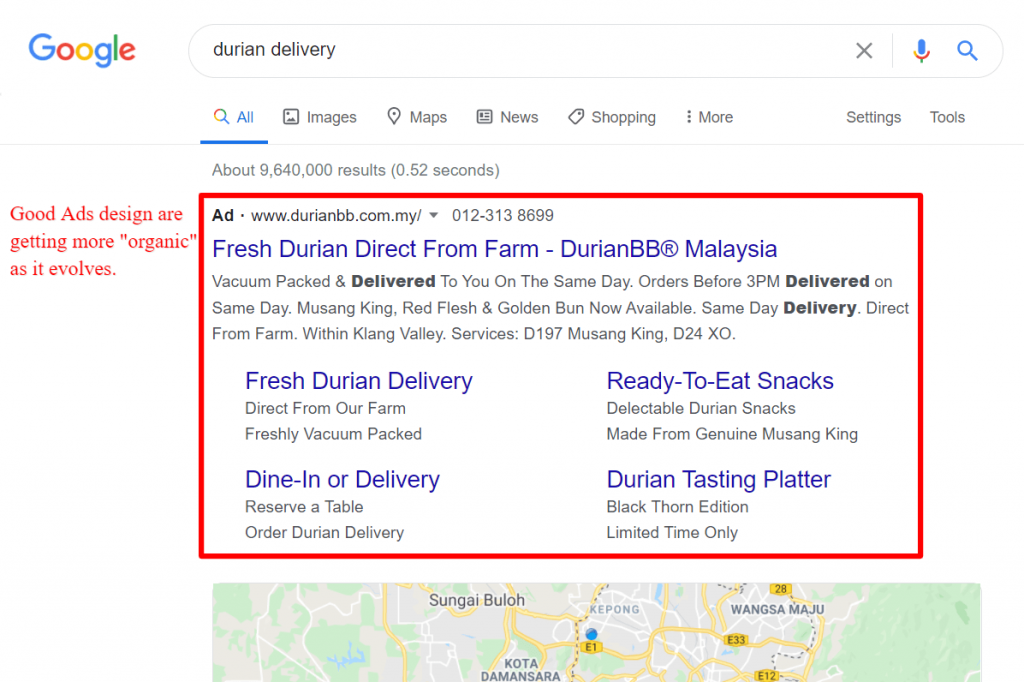
Google Maps Lower Your Clicks
Google Maps help users to find businesses in their community. Combining Google Ads and Google Maps, it may take 2-3 mouse scrolls until you see your organic listing.

The Keyword Has Low Search Volume
Obviously, you will not receive many clicks from keywords that have only 10-100 searches per month.
Poor Meta Tags
Meta title and meta description are the first things most searchers would scan and decide if they want to click on your search listing.
Poor meta tags can lower your Click-through-rate (CTR). I have written a blog on how to improve your CTR.
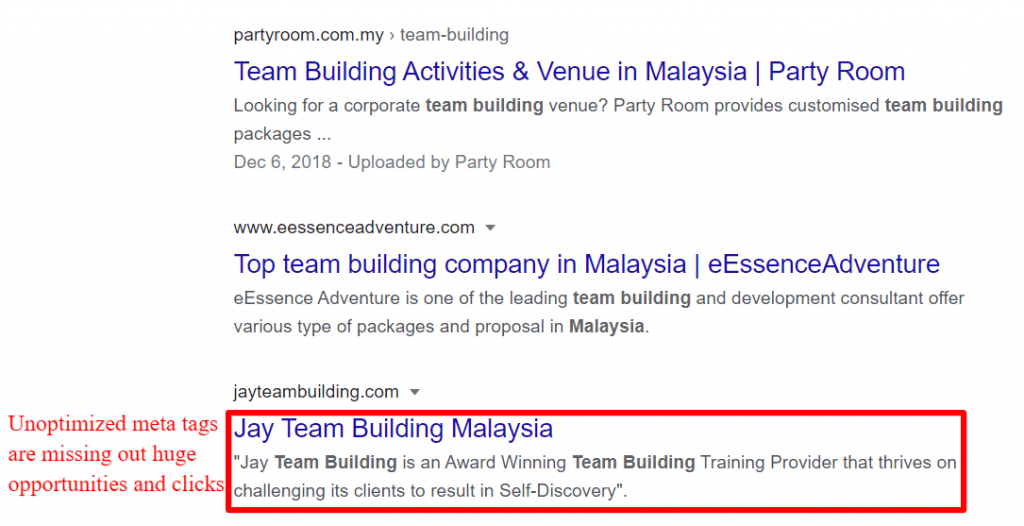
Should You Still Measure Keyword Rankings?
Yes, you should. Because keyword rankings are still a good indicator of your SEO progress.
Higher rankings are rewards from Google for providing good content and user experience.

Another benefit of keyword rankings is that they are easy to understand.
Keyword rankings are a good KPI for people who are busy or not familiar with other KPIs.
As compared to impressions, bounce rate, and assisted conversions, keyword rankings are self-explanatory: The higher = the better. It really saves time in measuring your SEO results.
Conclusion
Despite its convenience, you should see keyword rankings as a secondary KPI.
Organic search growth is a more accurate KPI to reflect your overall SEO performance.
You should also pay attention to user experience related metrics like bounce rate and average time on site. This helps you to focus on your visitors.
As for SEO service providers, aside from the ability to measure SEO results, it is equally important to be transparent when presenting your reports to clients.
The post How to Measure SEO Performance with Meaningful KPIs appeared first on JinMatic.
]]>The post Writing Guidelines for Copywriters appeared first on JinMatic.
]]>Writing guidelines vary depending on content types. That said, below is a list of general guidelines which are applicable for most content:
Perspective
2nd person, eg you, yours
Readability
Keep the sentences short. Any sentence should not be more than 15 words. Similarly, keep the paragraph short. Use simple English. Use bullet lists when necessary.
Backup The Facts
Any data or facts should be pulled from trusted sources only. Please list down (or directly link out) to the sources used.
Show Personality
Don’t be afraid to share personal experiences.
No Sales Language
Avoid using sale-like language as it breaks the trust. For example:
- Wrong: “You’ll find peace of mind when your dog finally stops barking!”
Instead, use conditional language (if, might, could, may, maybe) to make recommendations:
- Correct: “If it’s important to you to find a positive dog trainer, this may be a good place to start.”
No Passive Language
Please use the active voice. For example:
- Wrong: “To give you the best choice a ton of products were reviewed.”
- Correct: “We reviewed a ton of products to give you the best choice.”
Avoid Technical Jargon
If you need to use any technical language (or acronyms), explain in clear detail what it means.
- Wrong: “POH is one of the most commonly reported aesthetic complaints to dermatologists.”
- Correct: “Dark circles, or periorbital hyperpigmentation (POH) is one of the most commonly reported aesthetic complaints to dermatologists.”
Always Add Value and Avoid Filler Language
Every sentence should add value to your article; ask yourself if each sentence is necessary and if it enhances the quality of writing.
- Always add useful/valuable information.
- No BS’ing.
- Wrong: “If your dog is acting up, you might need a dog trainer” (…duh).
- Wrong: “This company teaches your dog to walk politely. They also offer leash training.” (…says the same thing twice).
- Wrong: Anything else that doesn’t add information to the article.
Examples of Good Articles
- https://www.farwestchina.com/tips/how-to-use-gmail-in-china/
- https://www.gardeningknowhow.com/edible/vegetables/tomato/growing-indoor-tomatoes.htm
The post Writing Guidelines for Copywriters appeared first on JinMatic.
]]>The post SEO Best Practice appeared first on JinMatic.
]]>- Keyword appear as the first word on title if it is possible. You can check the Google search result pages to see how your competitors are doing this.
- Keyword must appear in the first paragraph.
- Use headings (H1, H2, and H3) structure properly. Think of it as a book – H1 is the title so it should only be used once; H2 are internal subtitles; H3 are subtitles of H2. Here’s an example:
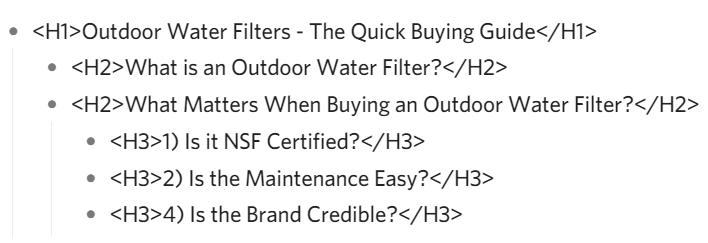
- All headers are bolded.
- Keyword Density: Keyword appear in the text at least 5 times, or around 1%.
- Primary keyword must appear in the meta title.
- Primary or secondary keyword must appear in the meta description.
- Include keyword in the URL.
- Keep the URL short (less than 5 words).
- Break lines: 8-12 words per paragraph.
- For every 1000 words, add 5 links (internal and external).
- Ensure that all links open in a new window.
- Use hemingwayapp.com combined with Grammarly Google Chrome extension. This improves content readability.
Images
- File name must contain the keyword. For example: outdoor-water-filter.jpg
- Use keyword as the image ALT text.
- Remove links from images when they are only media files.
The post SEO Best Practice appeared first on JinMatic.
]]>The post SEO for B2B Industry: 100+ Keywords on Google Page 1 appeared first on JinMatic.
]]>The Results
113
Keywords on Google 1st Page
30
Different Landing Pages on Google 1st Page
2015
Since we delivered consistent traffic to the client!
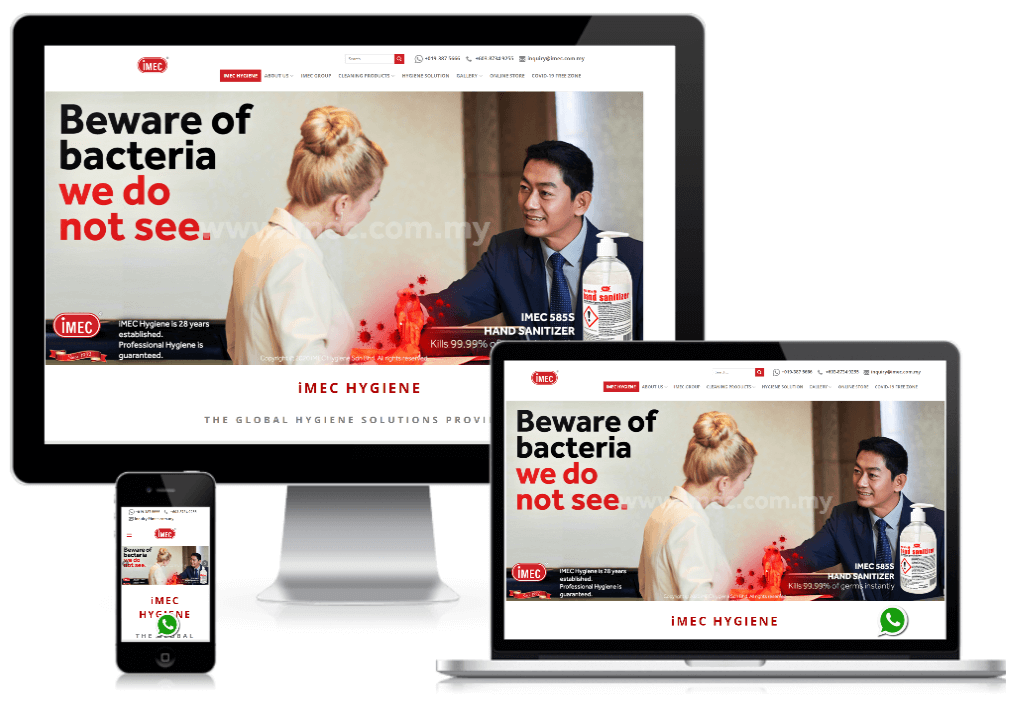
The Client
Being the leader in commercial cleaning products, iMEC is one of our many successful clients since 2015.
In this case study, you are going to learn how we achieved Page 1 rankings for 100+ keywords in this B2B industry:

The Mission
iMEC engaged us in 2015 with the goal to increase brand awareness and revenue.
You might be wondering, is there any difference between B2B and B2C when it comes to SEO strategies?
The answer is yes.
One difference is the keyword search intent.
For example, the search intent of “dustbin” and “dustbin supplier” is totally different.
While “dustbin” has a high search volume, the search listings appear to be targeting the household consumer market.
On the other hand, “dustbin supplier” is more targeting towards businesses who need to order dustbin in bulk.
Our Approach
During the keyword research phase, we put a lot of attention while defining the keyword search intent.
We couldn’t go wrong on this. Otherwise, we would target the wrong market, result in low conversion.
After we created and qualified a list of keywords, we created content that fulfils the search intent.
For example, prospects who land on the “scrubbing machine” page will see only relevant information and products.
On top of that, we optimized landing pages with the right Call-to-action (CTA). For product and category pages, the CTA is to send business inquiries.
Other technical aspects were also optimized, like the mobile usability:
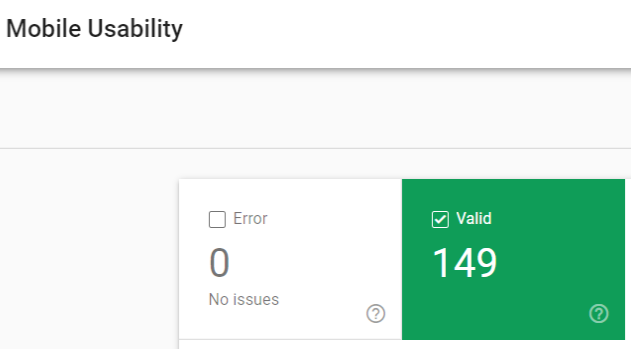
I have to admit, getting backlinks for B2B business is not an easy task.
That’s why we started with business directories submission. When done right, directories submission is the best way to gain business exposure and backlinks fast.
Takeaways
When working on B2B SEO, search intent need to be taken into consideration.
You may find that keyword research volume in the B2B industry is low. To overcome, try to create more relevant content (and post on relevant landing pages).
Having more landing pages help to lower the risk of losing traffic if certain products are discontinued or keyword rankings drop.
The post SEO for B2B Industry: 100+ Keywords on Google Page 1 appeared first on JinMatic.
]]>The post E-Commerce SEO: 580 to 3920 Visitors for Online Retailer appeared first on JinMatic.
]]>The Results
575%
Increase in SEO Traffic
107
Keywords on Google First Page
16%
Improvement in Bounce Rate
The Client
Being the largest outdoor products retailer in Malaysia, Evergreen started with a humble beginning since 1993 in a small showroom at Campbell Shopping Center. To date, they have expanded to 7 physical stores all over Malaysia.
In this case study, you are going to learn how we increased their SEO traffic by a whopping 575% – 580 to 3920 visitors:
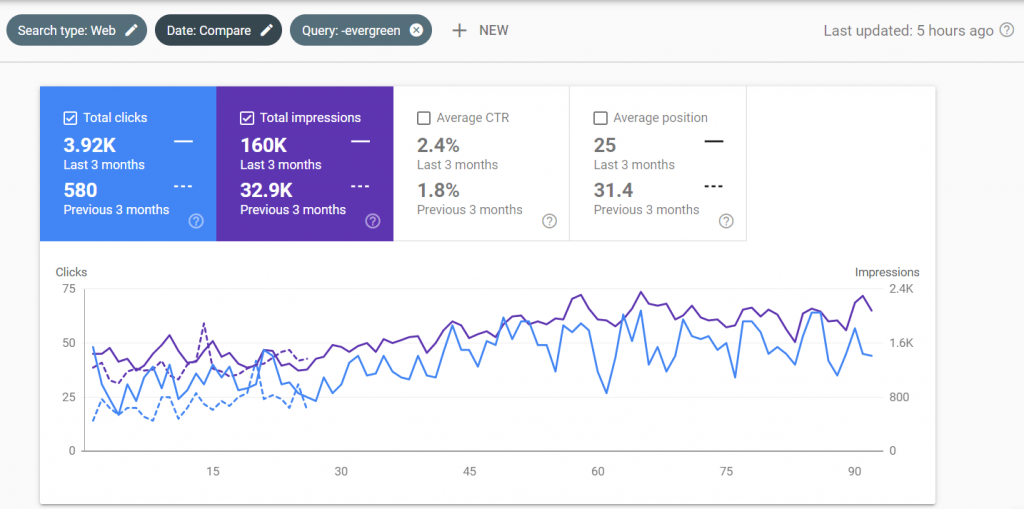
You can have confident in this data because we have excluded the brand keywords “Evergreen” to make the analysis much more credible.
The Mission
With competition started to raise in the industry, Evergreen came to us to help them with Search Engine Optimization service.
Having worked with countless online retailers since year 2008, we knew that one of their biggest challenge is price war among the competitors.
And to increase the profit margin, you can either lower your product cost (difficult since it is usually controlled by your suppliers), or increase your marketing ROI.
Evergreen Adventure carries more than 90+ brands and 80+ categories in their online store. After an analysis, we decided to optimize ALL of them for maximum SEO traffic.
Our Approach
Unlike corporate or local SEO, Ecommerce SEO especially online retailers contain more webpages to optimize – product pages, category pages, and brand pages.
After a discussion with the client on which brands and category pages they wanted to focus on, we started optimizing each landing pages.
We transformed the boring landing pages with interesting articles, images and videos.
As a result, the bounce rate (an user experience signal) increased by 16%. This tells Google that the visitors like their website.
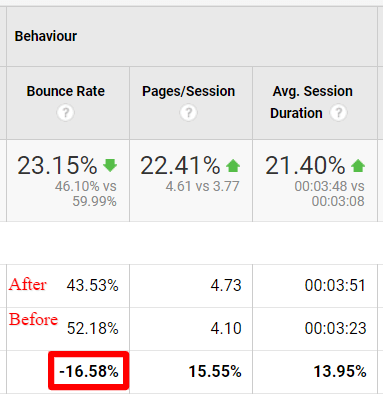
We didn’t stop there. Aside from optimizing each targeted landing pages, we optimized the global settings to maximize the SEO traffic.
One example is that we created dynamic meta tags so all the new products will have their meta tags optimized automatically:
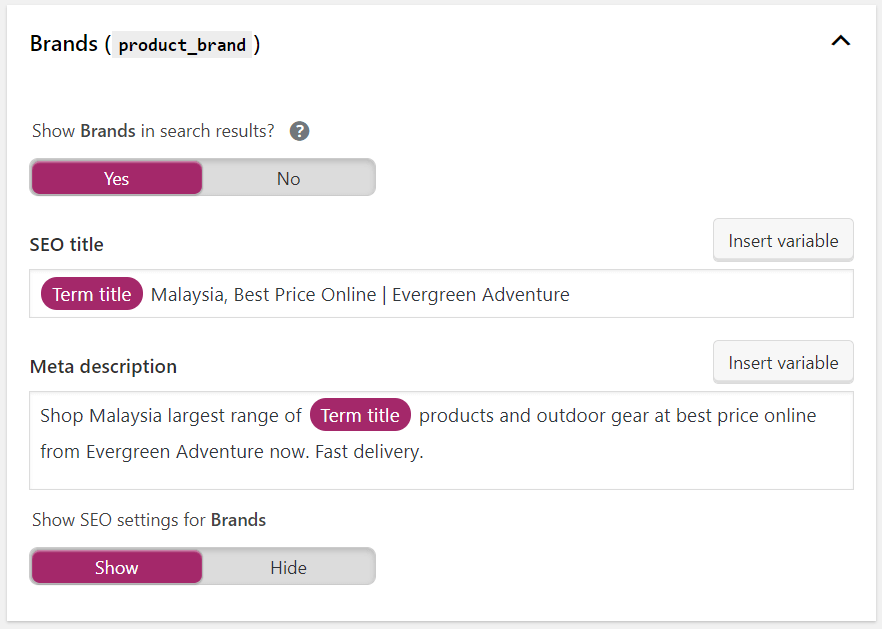
For your information, optimized meta tags on big online retailers can significantly increase the click-through-rate (CTR) and organic traffic.
By taking care of both individual and global onsite optimization, we maximized the keyword rankings potential:
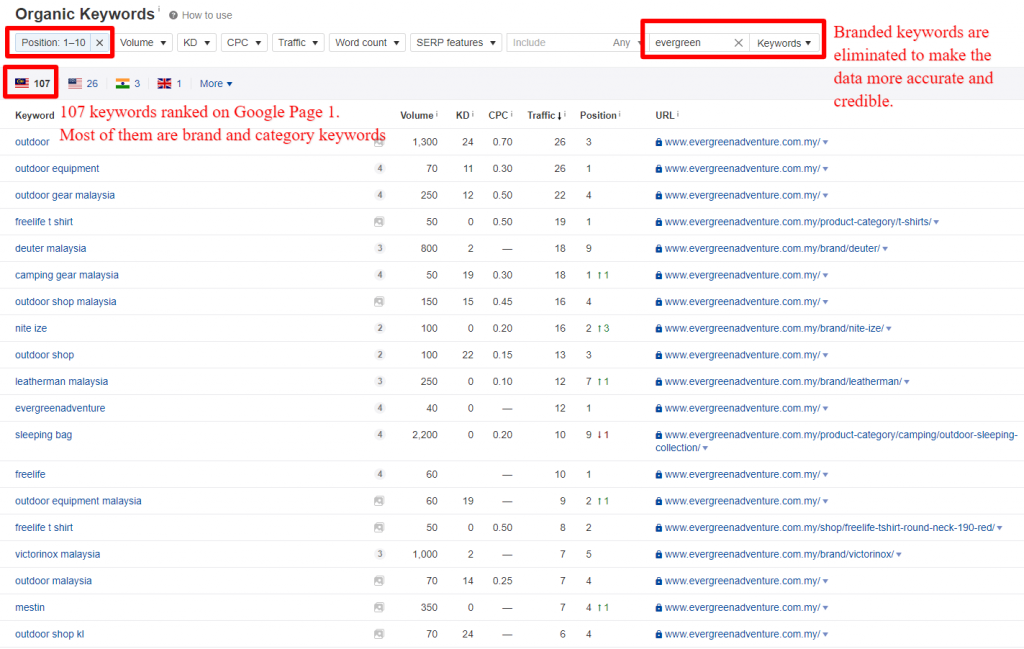
Takeaways
Online retailers need content, and by creating interesting content and optimizing onsite elements like meta tags, you can start ranking for your valuable brand and category keywords.
For lower competition keywords, sometimes you don’t even need backlinks to rank them on top of Google. This is because the content and onsite optimization alone are sufficient to outrank your competitors.
A holistic Ecommerce SEO should cover ALL brand, category and product pages instead of just the selected ones.
Our Ecommerce SEO improve the clients’ marketing ROI by taking care of their website as a whole and bringing them more sales.
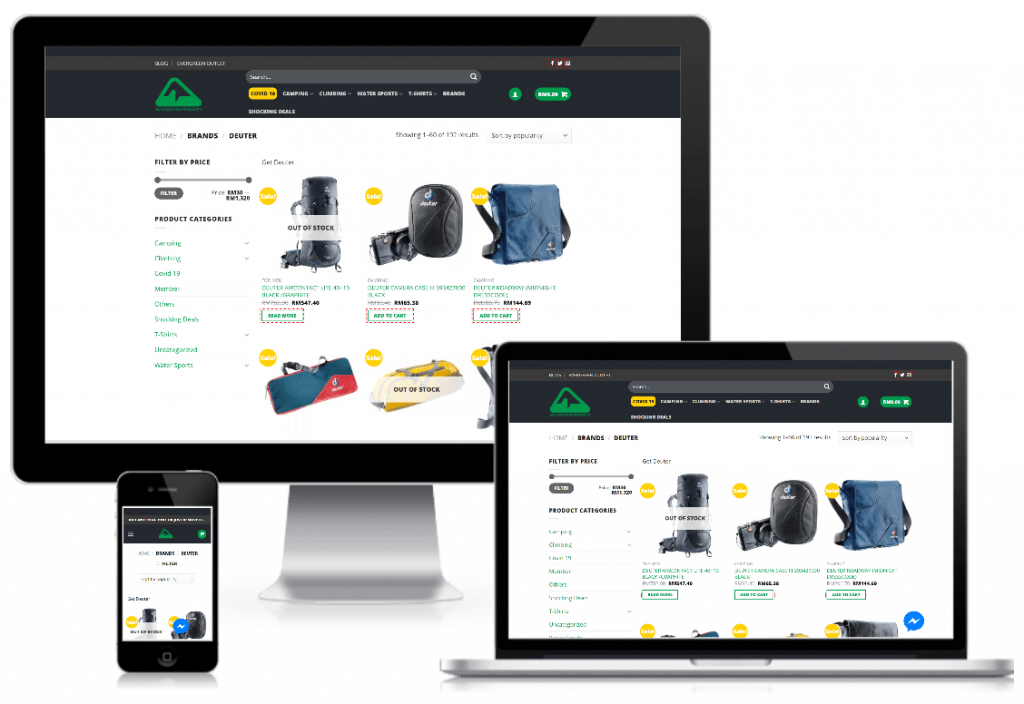
Claim Your Website Diagnosis for RM699 FREE
*limited to 1 diagnosis per company
Our manual diagnosis report shows:
★ Your existing ranked keywords.
★ Your biggest opportunities.
★ Bonus: 1 simple tactic to boost traffic using a free tool.
The post E-Commerce SEO: 580 to 3920 Visitors for Online Retailer appeared first on JinMatic.
]]>The post Medical Center SEO Case Study: 46% Traffic Increase in 3 Months! appeared first on JinMatic.
]]>The Results
46%
Increase in SEO Traffic
111
Keywords on Google First Page
23%
Increase in Referring Domains
The Client
Based in Petaling Jaya, Beacon Hospital is one of the leading cancer treatment hospital with over 80 medical specialists. Their business goal is to offer innovative medical resources, doctors and nurses to their patients with kindness and care.
The Mission
In this case study, I explain how we were able to increase their organic traffic by 46%, in just 3 months time!
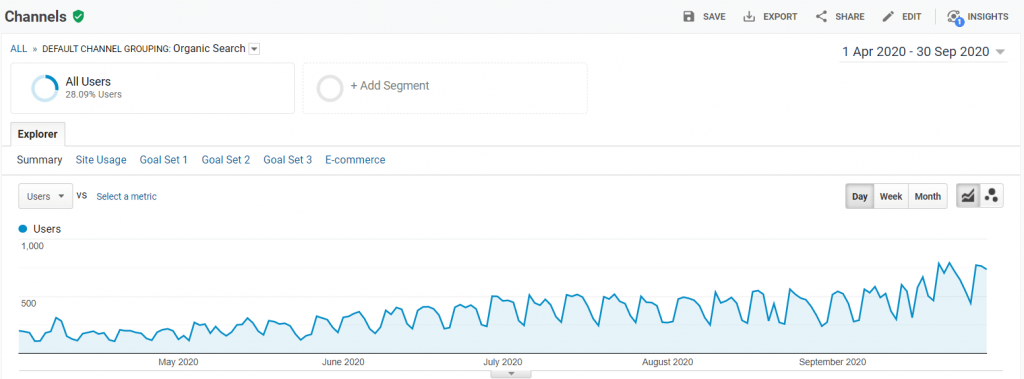
Beacon Hospital came to us as their traffic was dropping during Movement Control Order (MCO).
They threw us a straightforward mission – increase their organic traffic by 10% (taking the benchmark where their traffic were higher before MCO).
After we reviewed their website and found some opportunities – we happily accepted the challenge.
Our Approach
After an initial discussion with the client, we understood that they wanted to focus on:
- Different cancer treatment landing pages. E.g. https://www.beaconhospital.com.my/breast-cancer/
- Doctors’ profiles landing pages. E.g. https://www.beaconhospital.com.my/lee-foo-chiang/
We worked smarter for Beacon Hospital by discovering “quick opportunities” keywords. These are keywords which are already ranking for in positions 11-50. Because these keywords are already near the top of Google, we can leverage to see faster results! After we discovered these keywords we started SEO Audit on each targeted landing pages.
Since we were competing against other high authority websites like other private hospitals and Wikipedia, we took every opportunities we could in terms of onsite optimization.
Furthermore, we gave the website a boost with whitehat backlink acquisition such as top quality business directories and niche comments.
Onsite optimization and whitehat backlink acquisition are the key when you compete with other high authority websites. After 3 months of SEO campaign, we helped the client to recover the impact of MCO. We boosted their SEO traffic by a whopping 46% and help them acquire more leads.
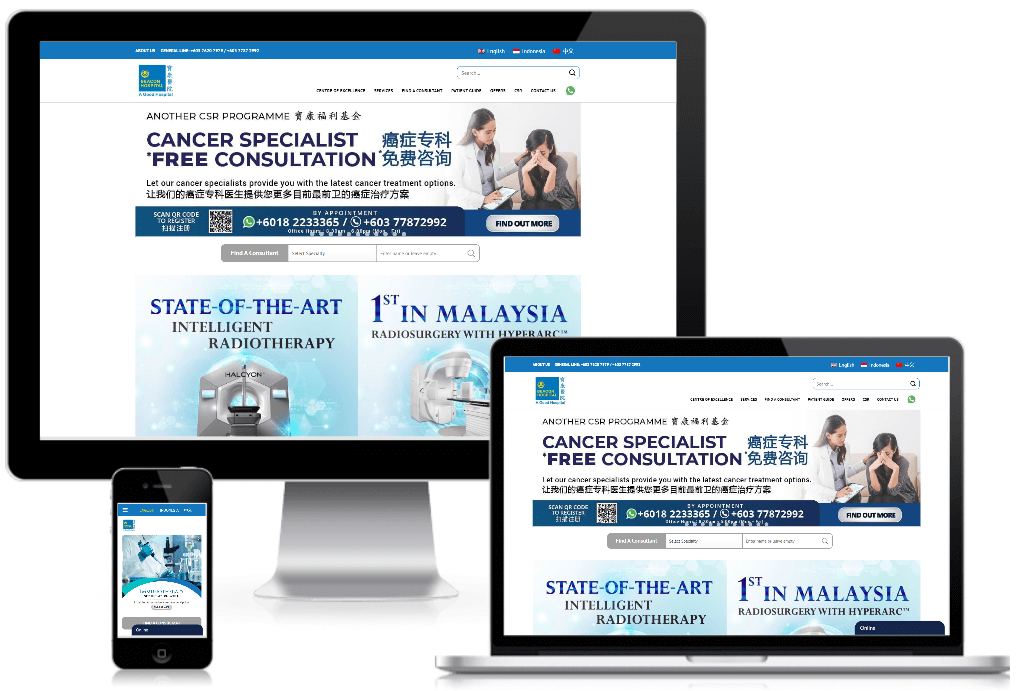
Claim Your Website Diagnosis for RM699 FREE
*limited to 1 diagnosis per company
Our manual diagnosis report shows:
★ Your existing ranked keywords.
★ Your biggest opportunities.
★ Bonus: 1 simple tactic to boost traffic using a free tool.
The post Medical Center SEO Case Study: 46% Traffic Increase in 3 Months! appeared first on JinMatic.
]]>